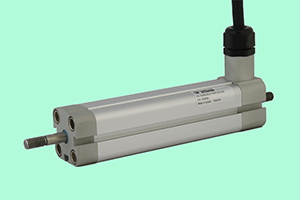
Linear actuator uses shape memory alloy to offer high force and precision
Mike Edwards
Products Kinitics Automation linear actuator
Kinitics Automation has announced its first product in a line of high-force, short-throw linear actuators, the KLA05. The KLA05 linear actuator is a shape memory alloy-based actuator that uses proprietary Bundled Wire technology to deliver high force and actuation speed in a small package. The product is the first commercially available linear actuator using shape memory alloy to provide precise linear motion without the use of motors and requires only electrical power to operate. The product allows users to upgrade and improve existing systems, while also enabling the automation and control of processes that were previously unfeasible using conventional equipment.
The linear actuator provides forces up to 650 N (146 lbf) and strokes up to 6.7 mm (0.264 in.), can be easily configured to supply a pushing or pulling force, and fits in a variety of applications. Due to its use of shape memory alloy and Kinitics’ proprietary Bundled Wire technology, the KLA05 Linear Actuator offers a number of features and benefits that distinguish it from other types of actuators: positional accuracy of ±5 µm; requires minimal infrastructure to operate; and, has only one moving part and no backlash.
The KLA05 Linear Actuator is available with a variety of accessories, including rod-end attachments, a range of mounting brackets and an adjustable home position switch. Potential applications for the Kinitics Automation KLA05 Linear Actuator include gripping, pressing, punching, and positioning.
Also introduced with the KLA05 Linear Actuator is the Kinitics KCA020 Controller, which allows the actuator to be used in anything from the simplest to the most elaborate of control strategies. The Kinitics KCA020 Controller utilizes single-phase 120 VAC 60 Hz power and interfaces with standard control hardware using discrete I/O. A 4-20 ma input is provided for complex control using position and/or force feedback strategies.
Print this page